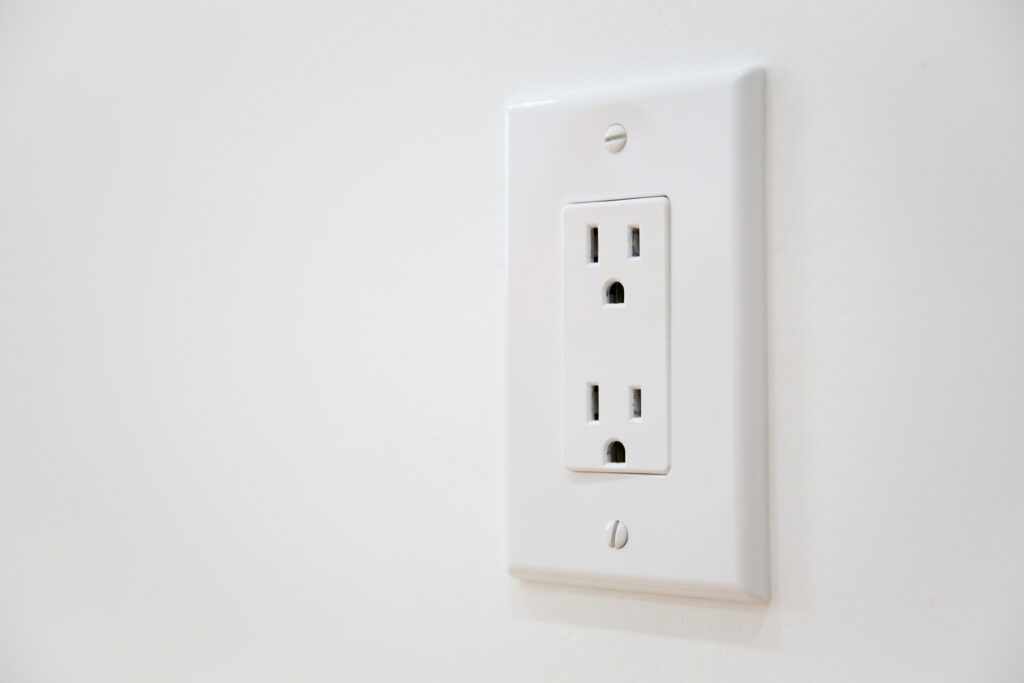
When planning a renovation or building a new retail location, are you considering all the details beyond the aesthetics? Small but important details like proper placement and number of electrical outlets are important. Ensuring your space is safe and functional can help support your vision for your space and future expansion plans. We’ve asked our retail commercial construction experts for their top factors to consider when determining the proper number and placement of electrical outlets for your construction project.
Follow Compliance and Building Codes
All construction projects involving electrical installation, regardless of new builds or renovations, must adhere to local building codes and regulations. Electrical regulations or laws enforce electrical installation safety standards. They are to protect both the building and its occupants. Improper wiring, system overload, and failure to meet these standards can result in expensive repairs or even catastrophic events like a fire.
The National Electrical Code (NEC) in the United States has specific requirements for outlet placement in commercial spaces. Outlets must be placed at intervals that ensure no point along a wall is more than six feet from an outlet. This guideline helps prevent the overuse of extension cords, which can pose fire hazards.
Understand Your Electrical Needs
Your retail business is unique to your industry, services, and space, so you will have varying electrical needs. For example, an electronics store will need many outlets and lights while catering to peak or high demand, whereas a clothing store may only need outlets primarily for lighting, sound, and point-of-sale systems. Work with your commercial construction team to conduct a needs audit to ensure your design and equipment can accommodate the proper power supply.
Plan for Future-Proofing and Design Flexibility
Retail stores, especially those part of a larger corporation or franchise, frequently change aesthetics, product displays, technology, and floor plans. Future-proofing your electrical system by installing more outlets than you currently need can save both time and money in the future. It can also make your changes more straightforward and quicker, which leads to less disruption to your business operations. It is also recommended to include flexible power solutions such as a modular power system, which allows for easy reconfiguration and growth as your demands change.

Opt for Sustainability and Energy Efficiency
Many cities and states require that builders incorporate green building and sustainability practices into all new construction and remodels. Beyond sustainable lighting such as LED fixtures, consider using energy-efficient outlets and smart power strips that can help manage energy use more effectively. Positioning outlets to optimize natural light and energy-efficient lighting systems can also contribute to a more sustainable retail environment. Incorporating sustainability into your electrical planning can reduce operational costs and environmental impact.
Address Safety Considerations
Safety in construction extends beyond creating a safe worksite; it also means creating a safe final product. Work closely with your contractor to ensure all outlets are properly grounded and that the electrical system can handle the load. In areas prone to moisture, such as near restrooms or cooking equipment, ground fault circuit interrupter (GFCI) outlets should be used to prevent electrical shocks. Ask about regular inspections and proper maintenance to avoid potential hazards.

Create a Functional Design and Aesthetics
Where you place outlets, they should be functional and aesthetically pleasing, blending in with your design. Outlets should be easily accessible but discreetly placed to maintain the store’s visual appeal. They can be installed behind displays or integrated into the store’s design elements. Consider using covers that blend with the decor to keep the look clean and professional.
Planning your retail remodel or new build should include small details like electrical work. Sharing your design plans and needs with your retail and commercial construction team can help ensure that you have enough outlets, proper outlet placement, and enough power for your current and future storefront and business needs. Division 9 Commercial Construction can help ensure your retail storefront is safely outfitted for your electrical needs. Contact us for more details.
